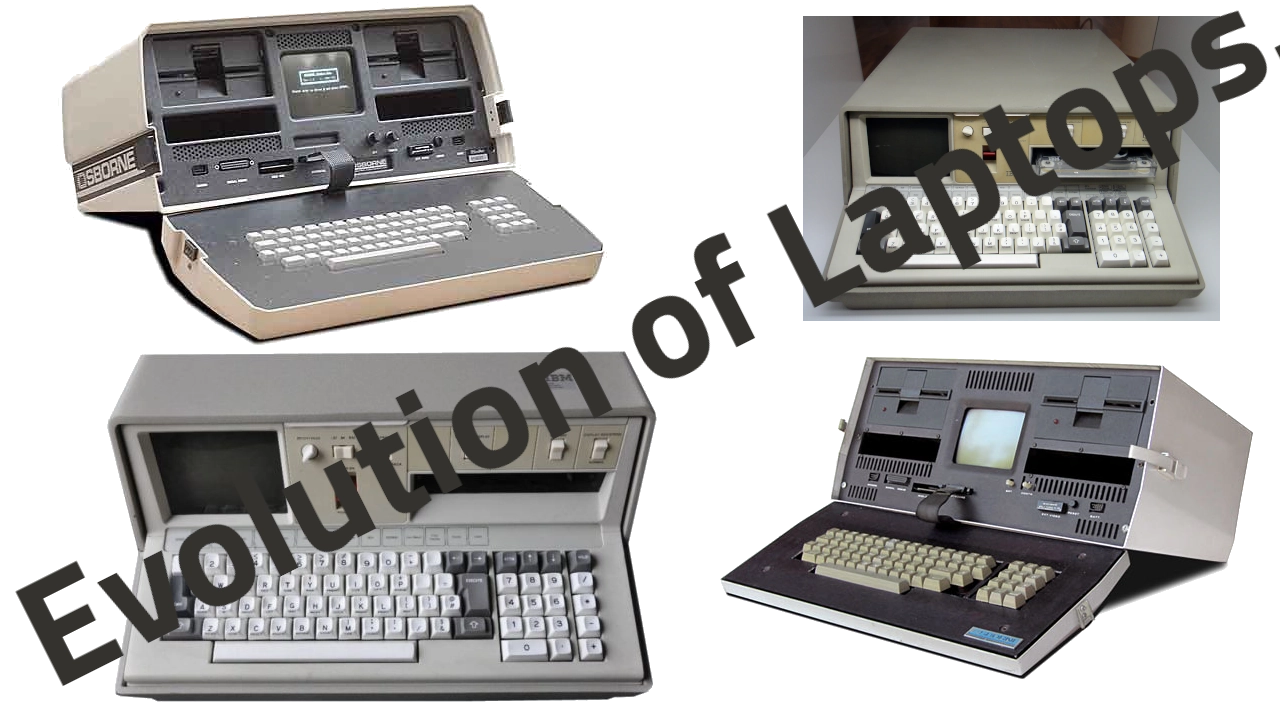Evolution of the Laptop

The evolution of the laptop is a fascinating journey that spans several decades, marked by technological advancements, design innovations, and a continuous quest for portability and functionality. Here's a brief overview of the key stages in the evolution of the laptop:
Osborne 1 (1981): The Osborne 1 is often considered one of the first commercially successful portable computers. Developed by Adam Osborne, it weighed around 24 pounds and featured a built-in screen, keyboard, and dual floppy disk drives.
Grid Compass (1982): Designed by William Moggridge, the Grid Compass is recognized as one of the earliest true laptops. It introduced the clamshell design with a folding screen and a keyboard, resembling the form factor of modern laptops.
Kyocera Kyotronic 85 (1983): Another early portable computer, the Kyocera Kyotronic 85, contributed to the development of the laptop with its clamshell design. It featured a small LCD screen and a keyboard.
IBM PC Convertible (1986): IBM's PC Convertible, released in 1986, was one of the first true IBM laptops. It featured a flip-up display, a keyboard, and compatibility with IBM PC software.
Compaq LTE (1989): The Compaq LTE, released in 1989, was a landmark in portable computing. It was one of the first laptops compatible with IBM's software, making it a popular choice among business professionals.
Apple PowerBook Series (1991): Apple's PowerBook series, introduced in 1991, marked a significant shift in laptop design. The PowerBook 100, PowerBook 140, and PowerBook 170 featured a sleek design, a palm rest, and a trackball, setting new standards for portable computing.
Introduction of CD-ROM Drives (mid-1990s): Laptops in the mid-1990s saw the integration of CD-ROM drives, enabling users to install software and access multimedia content more conveniently.
Introduction of Intel Pentium Processors (late 1990s): The late 1990s witnessed the adoption of Intel Pentium processors in laptops, providing increased processing power and improved performance.
Compact Design and Ultrabooks (2010s): The 2010s saw a focus on thin and lightweight designs, giving rise to ultrabooks. These laptops, often equipped with solid-state drives (SSDs) for faster performance, emphasized portability without sacrificing power.
2-in-1 Convertibles and Touchscreens (2010s): The introduction of 2-in-1 convertible laptops allowed users to switch between traditional laptop and tablet modes. Touchscreens became more common, adding a new dimension to user interaction.
Advancements in Display Technology (2020s): Laptops in the 2020s continued to evolve with advancements in display technology, including high-refresh-rate screens, higher resolutions, and bezel-less designs.
Transition to ARM Architecture (2020s): Some laptop manufacturers began experimenting with ARM-based processors, signaling a shift in processor architecture and potential improvements in power efficiency.
The evolution of the laptop is an ongoing process, with continued advancements in areas such as battery technology, processing power, and connectivity. As technology progresses, laptops are likely to become even more powerful, portable, and versatile in the years to come.
Thank you,